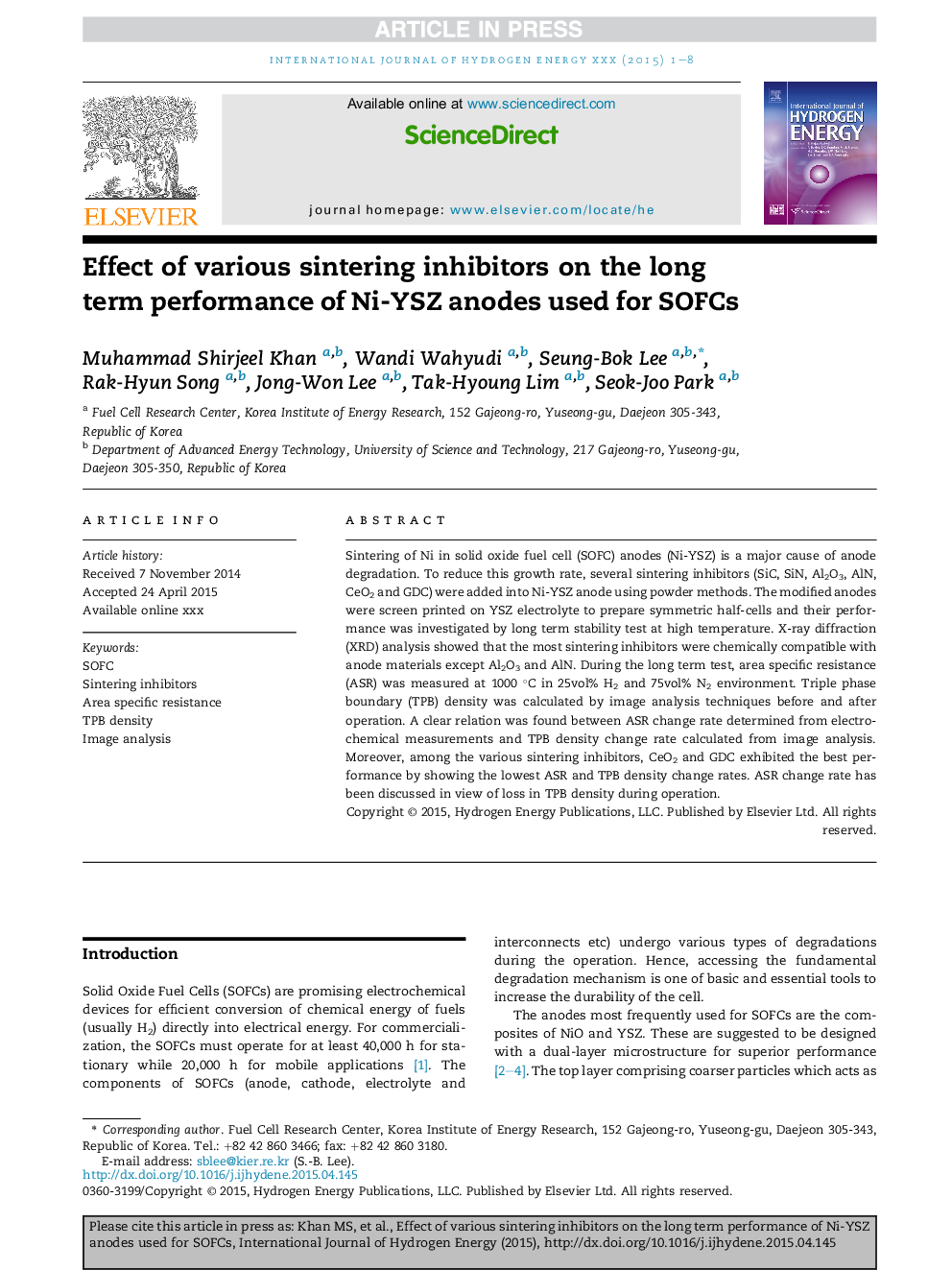| Article ID | Journal | Published Year | Pages | File Type |
|---|---|---|---|---|
| 7714487 | International Journal of Hydrogen Energy | 2015 | 8 Pages |
Abstract
Sintering of Ni in solid oxide fuel cell (SOFC) anodes (Ni-YSZ) is a major cause of anode degradation. To reduce this growth rate, several sintering inhibitors (SiC, SiN, Al2O3, AlN, CeO2 and GDC) were added into Ni-YSZ anode using powder methods. The modified anodes were screen printed on YSZ electrolyte to prepare symmetric half-cells and their performance was investigated by long term stability test at high temperature. X-ray diffraction (XRD) analysis showed that the most sintering inhibitors were chemically compatible with anode materials except Al2O3 and AlN. During the long term test, area specific resistance (ASR) was measured at 1000 °C in 25vol% H2 and 75vol% N2 environment. Triple phase boundary (TPB) density was calculated by image analysis techniques before and after operation. A clear relation was found between ASR change rate determined from electrochemical measurements and TPB density change rate calculated from image analysis. Moreover, among the various sintering inhibitors, CeO2 and GDC exhibited the best performance by showing the lowest ASR and TPB density change rates. ASR change rate has been discussed in view of loss in TPB density during operation.
Related Topics
Physical Sciences and Engineering
Chemistry
Electrochemistry
Authors
Muhammad Shirjeel Khan, Wandi Wahyudi, Seung-Bok Lee, Rak-Hyun Song, Jong-Won Lee, Tak-Hyoung Lim, Seok-Joo Park,
